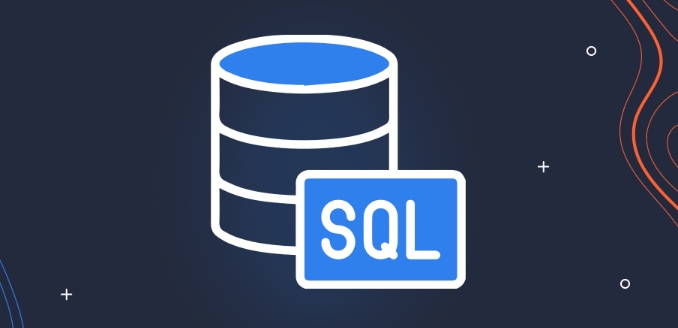SQL dialects differ in syntax and functionality. 1. String concatenation uses CONCAT() in MySQL, || or CONCAT() in PostgreSQL, and in SQL Server. 2. NULL handling employs IFNULL() in MySQL, ISNULL() in SQL Server, and COALESCE() common across all. 3. Date functions vary: NOW(), DATE_FORMAT() in MySQL; NOW(), TO_CHAR() in PostgreSQL; GETDATE(), FORMAT() in SQL Server. 4. Auto-incrementing IDs are defined via AUTO_INCREMENT in MySQL, SERIAL in PostgreSQL, and IDENTITY in SQL Server. Understanding these distinctions is vital for cross-database compatibility and smooth migrations.

When you're working with SQL, it's easy to assume all versions are the same. But once you switch databases—like from MySQL to PostgreSQL or SQL Server—you’ll quickly realize they’re not entirely compatible. Each dialect has its own syntax quirks, built-in functions, and unique features. If you're writing queries across multiple platforms or migrating between systems, understanding these differences is key.

String Concatenation Varies Between Dialects
How you join strings together depends heavily on which SQL dialect you're using. For example:

-
In MySQL, you use the
CONCAT()function:SELECT CONCAT(first_name, ' ', last_name) AS full_name FROM users;
In PostgreSQL, you can either use the
||operator or theCONCAT()function:
SELECT first_name || ' ' || last_name AS full_name FROM users;
In SQL Server, the
SELECT first_name ' ' last_name AS full_name FROM users;
This difference might seem minor, but if you're building dynamic SQL or trying to write portable code, this can trip you up fast.
Handling NULL Values Has Nuances
All SQL dialects deal with NULLs, but how you substitute or handle them varies.
In MySQL, you often use
IFNULL():SELECT IFNULL(email, 'No email') FROM users;
PostgreSQL uses
COALESCE()(which is also standard SQL):SELECT COALESCE(email, 'No email') FROM users;
SQL Server has
ISNULL(), which works similarly to MySQL’sIFNULL():SELECT ISNULL(email, 'No email') FROM users;
Also worth noting: COALESCE() is available in all three, so if portability matters, that’s a safer bet than relying on database-specific functions.
Date and Time Functions Aren’t Interchangeable
Working with dates can be especially tricky because each dialect has its own set of functions.
- To get the current date and time:
- MySQL:
NOW() - PostgreSQL:
NOW() - SQL Server:
GETDATE()
- MySQL:
But even when functions look similar, their behavior might differ. For instance, formatting dates:
In MySQL, you’d use
DATE_FORMAT():SELECT DATE_FORMAT(birthdate, '%Y-%m') FROM users;
In PostgreSQL, it’s
TO_CHAR():SELECT TO_CHAR(birthdate, 'YYYY-MM') FROM users;
In SQL Server, you’d go with
FORMAT():SELECT FORMAT(birthdate, 'yyyy-MM') FROM users;
These variations mean you’ll need to adjust your queries depending on the system you're using.
Auto-Incrementing IDs Have Different Syntax
If you're defining tables, handling primary keys that auto-increment is another area where dialects diverge.
In MySQL, you use
AUTO_INCREMENT:CREATE TABLE users ( id INT AUTO_INCREMENT PRIMARY KEY );
In PostgreSQL, sequences are used, and you typically define a column with
SERIAL:CREATE TABLE users ( id SERIAL PRIMARY KEY );
In SQL Server, you use
IDENTITY:CREATE TABLE users ( id INT IDENTITY(1,1) PRIMARY KEY );
It's not just about keywords—understanding how identity values behave across inserts and deletions can also affect application logic.
Basically, while SQL standards exist, real-world usage means dealing with these dialect-specific differences. Knowing how each system handles strings, NULLs, dates, and table definitions makes switching or integrating easier. And yes, it’s easy to forget one syntax when you’ve been working in another recently—so keep a cheat sheet handy.
The above is the detailed content of Comparing Different SQL Dialects (e.g., MySQL, PostgreSQL, SQL Server). For more information, please follow other related articles on the PHP Chinese website!

Hot AI Tools

Undress AI Tool
Undress images for free

Undresser.AI Undress
AI-powered app for creating realistic nude photos

AI Clothes Remover
Online AI tool for removing clothes from photos.

Clothoff.io
AI clothes remover

Video Face Swap
Swap faces in any video effortlessly with our completely free AI face swap tool!

Hot Article

Hot Tools

Notepad++7.3.1
Easy-to-use and free code editor

SublimeText3 Chinese version
Chinese version, very easy to use

Zend Studio 13.0.1
Powerful PHP integrated development environment

Dreamweaver CS6
Visual web development tools

SublimeText3 Mac version
God-level code editing software (SublimeText3)
 How to find columns with a specific name in a SQL database?
Jul 07, 2025 am 02:08 AM
How to find columns with a specific name in a SQL database?
Jul 07, 2025 am 02:08 AM
To find columns with specific names in SQL databases, it can be achieved through system information schema or the database comes with its own metadata table. 1. Use INFORMATION_SCHEMA.COLUMNS query is suitable for most SQL databases, such as MySQL, PostgreSQL and SQLServer, and matches through SELECTTABLE_NAME, COLUMN_NAME and combined with WHERECOLUMN_NAMELIKE or =; 2. Specific databases can query system tables or views, such as SQLServer uses sys.columns to combine sys.tables for JOIN query, PostgreSQL can be used through inf
 How to backup and restore a SQL database
Jul 06, 2025 am 01:04 AM
How to backup and restore a SQL database
Jul 06, 2025 am 01:04 AM
Backing up and restoring SQL databases is a key operation to prevent data loss and system failure. 1. Use SSMS to visually back up the database, select complete and differential backup types and set a secure path; 2. Use T-SQL commands to achieve flexible backups, supporting automation and remote execution; 3. Recovering the database can be completed through SSMS or RESTOREDATABASE commands, and use WITHREPLACE and SINGLE_USER modes if necessary; 4. Pay attention to permission configuration, path access, avoid overwriting the production environment and verifying backup integrity. Mastering these methods can effectively ensure data security and business continuity.
 When to use SQL subqueries versus joins for data retrieval.
Jul 14, 2025 am 02:29 AM
When to use SQL subqueries versus joins for data retrieval.
Jul 14, 2025 am 02:29 AM
Whether to use subqueries or connections depends on the specific scenario. 1. When it is necessary to filter data in advance, subqueries are more effective, such as finding today's order customers; 2. When merging large-scale data sets, the connection efficiency is higher, such as obtaining customers and their recent orders; 3. When writing highly readable logic, the subqueries structure is clearer, such as finding hot-selling products; 4. When performing updates or deleting operations that depend on related data, subqueries are the preferred solution, such as deleting users that have not been logged in for a long time.
 Comparing Different SQL Dialects (e.g., MySQL, PostgreSQL, SQL Server)
Jul 07, 2025 am 02:02 AM
Comparing Different SQL Dialects (e.g., MySQL, PostgreSQL, SQL Server)
Jul 07, 2025 am 02:02 AM
SQLdialectsdifferinsyntaxandfunctionality.1.StringconcatenationusesCONCAT()inMySQL,||orCONCAT()inPostgreSQL,and inSQLServer.2.NULLhandlingemploysIFNULL()inMySQL,ISNULL()inSQLServer,andCOALESCE()commonacrossall.3.Datefunctionsvary:NOW(),DATE_FORMAT()i
 How to find the second highest salary in SQL
Jul 14, 2025 am 02:06 AM
How to find the second highest salary in SQL
Jul 14, 2025 am 02:06 AM
There are three core methods to find the second highest salary: 1. Use LIMIT and OFFSET to skip the maximum salary and get the maximum, which is suitable for small systems; 2. Exclude the maximum value through subqueries and then find MAX, which is highly compatible and suitable for complex queries; 3. Use DENSE_RANK or ROW_NUMBER window function to process parallel rankings, which is highly scalable. In addition, it is necessary to combine IFNULL or COALESCE to deal with the absence of a second-highest salary.
 What is the difference between SQL and NoSQL
Jul 08, 2025 am 01:52 AM
What is the difference between SQL and NoSQL
Jul 08, 2025 am 01:52 AM
The core difference between SQL and NoSQL databases is data structure, scaling method and consistency model. 1. In terms of data structure, SQL uses predefined patterns to store structured data, while NoSQL supports flexible formats such as documents, key values, column families and graphs to process unstructured data; 2. In terms of scalability, SQL usually relies on stronger hardware on vertical expansion, while NoSQL realizes distributed expansion through horizontal expansion; 3. In terms of consistency, SQL follows ACID to ensure strong consistency and is suitable for financial systems, while NoSQL mostly uses BASE models to emphasize availability and final consistency; 4. In terms of query language, SQL provides standardized and powerful query capabilities, while NoSQL query languages ??are diverse but not as mature and unified as SQL.
 What is a composite primary key in SQL?
Jul 08, 2025 am 01:38 AM
What is a composite primary key in SQL?
Jul 08, 2025 am 01:38 AM
AcompositeprimarykeyinSQLisaprimarykeycomposedoftwoormorecolumnsthattogetheruniquelyidentifyeachrow.1.Itisusedwhennosinglecolumncanensurerowuniqueness,suchasinastudent-courseenrollmenttablewherebothStudentIDandCourseIDarerequiredtoformauniquecombinat
 Advantages of Using Common Table Expressions (CTEs) in SQL.
Jul 07, 2025 am 01:46 AM
Advantages of Using Common Table Expressions (CTEs) in SQL.
Jul 07, 2025 am 01:46 AM
The main advantages of CTEs in SQL queries include improving readability, supporting recursive queries, avoiding duplicate subqueries, and enhancing modular and debugging capabilities. 1. Improve readability: By splitting complex queries into multiple independent logical blocks, the structure is clearer; 2. Support recursive queries: The logic is simpler when processing hierarchical data, suitable for deep traversal; 3. Avoid duplicate subqueries: define multiple references at a time, reduce redundancy and improve efficiency; 4. Better modularization and debugging capabilities: Each CTE block can be run and verified separately, making it easier to troubleshoot problems.






